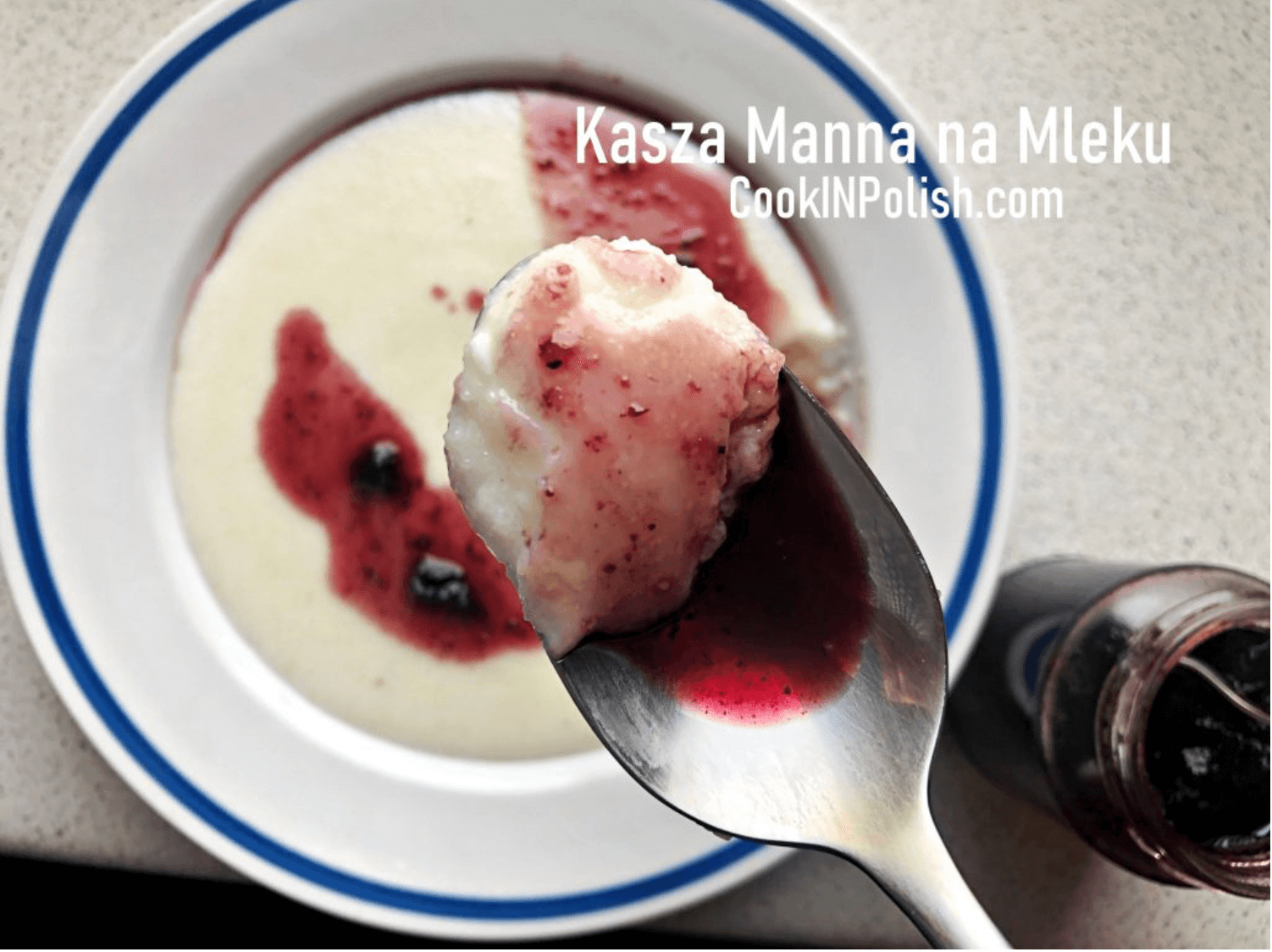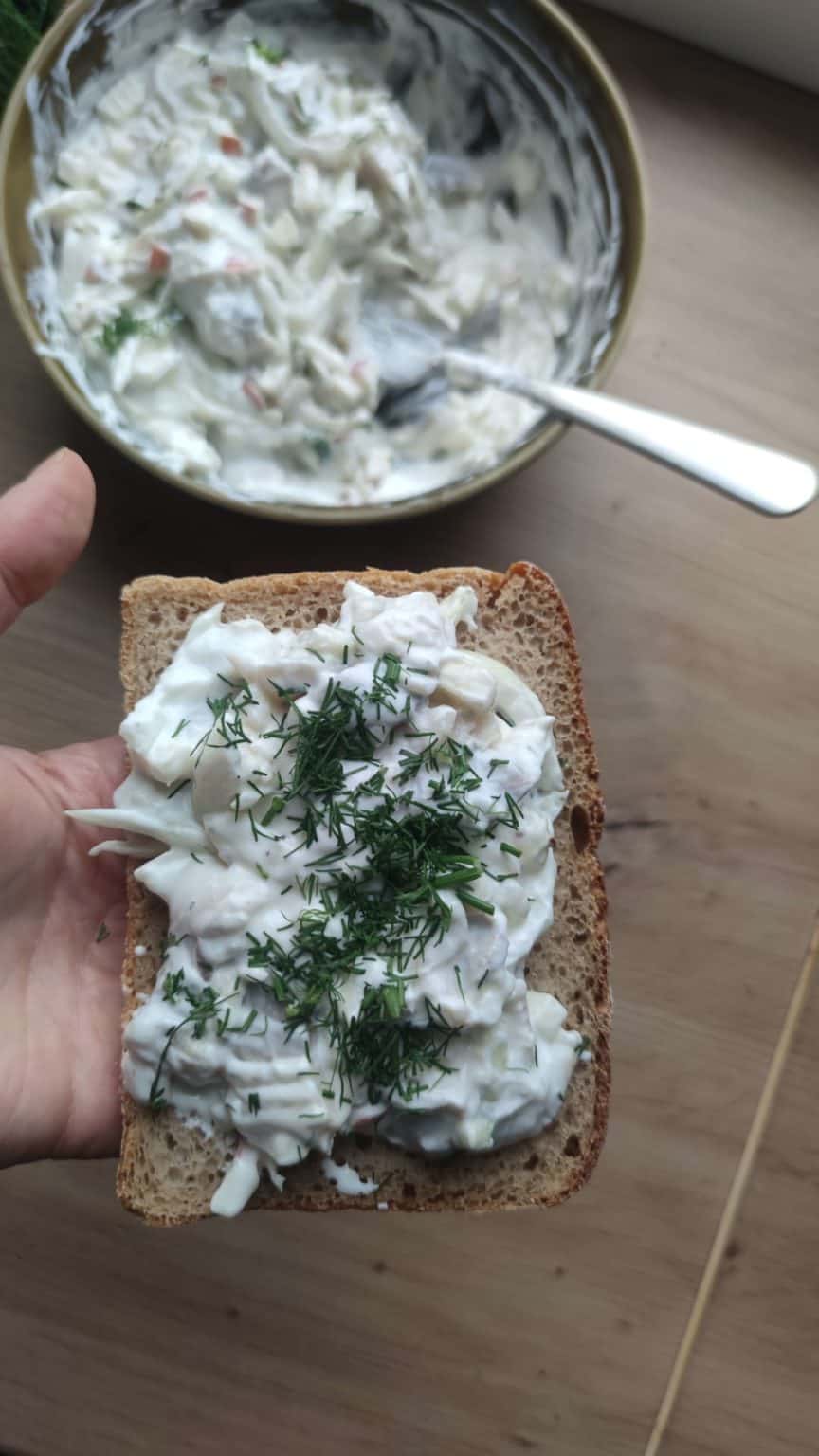It’s been a little over seven months since I published my first post on Finding Poland related to Polish food. That was an interview with Ola Rosłanowska who gave her take on some of the most delicious Polish dishes out there. Ola recently joined me again to discuss typical Polish breakfast dishes. First of all, I’d like to introduce you to Ola before getting to the interview.
Ola Rosłanowska – Cooking Delicious Sentimental Polish Food
Ola Rosłanowska is the creator of CookINPolish – Polish Food Recipes – the go-to place online for hearty Polish food recipes.
In our first interview together in November 2023, Ola revealed that her grandma, Emilka, ignited her passion for cooking.
Ola lives in Grochów, part of the borough of Praga-Południe in Warsaw.
Typical Polish Breakfast Dishes – Interview
1. When I remember the breakfasts I’ve had as a guest in Polish homes, I recall my hosts serving bread, bread spreads, cold meats, various cheeses and salads. Would it be fair to say that most typical Polish breakfast dishes are eaten cold?
“ Polish sandwiches – kanapki – most commonly find their way onto Polish people’s breakfast. You don’t need a lot of time to prepare them. There are so many possibilities to make delicious Polish sandwiches.
We have great bread in Poland. Even the regular cheapest bread is of good quality. The best is sourdough rye or wheat bread. First of all, you need to spread butter on a slice of bread. Then, you just need to choose a few toppings or spreads. It’s really common to have smoked ham or kiełbasa on sandwiches, followed by tomato slices, possibly a leaf of lettuce and then just salt and pepper. Another very traditional option is cold cuts, topped with horseradish sauce.
Many Poles like to put sliced hard boiled egg spread with mayo on their sandwiches. This would be topped with chives. Other vegetarian options are “yellow cheese” (plus fresh tomato/cucumber slices) or Polish farmers’ cheese (twaróg), with jam or honey on top. There are many bread spreads available as well – smoked mackerel bread spread, canned meat pate or – beloved by our grandparents – lard with crackling, topped with fermented cucumbers (ogórki kiszone).
Many Poles also eat breakfast served hot. We like scrambled eggs. The heartiest version would be scrambled eggs fried with onions and diced kiełbasa. Seasonally we make scrambled eggs with chanterelles (spring forest mushrooms) or with fried tomatoes. Another quintessential Polish breakfast would be milk soup. This consists of just rice and milk or noodles and milk.
Finally, I have to mention semolina pudding with milk – kasza manna na mleku – which can be eaten warm or cold. This is one of the flavours of my childhood.”

2. Some years ago, I read an article on culture.pl about Poland’s national obsession with open sandwiches. When it comes to breakfast time, how do you like to experiment with these open sandwiches in terms of toppings?
“Apart from cold meat cuts, we have a lot of bread spreads. For example, you can make smoked mackerel bread spread, just like my grandma did. This is smoked mackerel together with hard boiled egg and dill pickled cucumbers, as well as some mayo. This mix of ingredients is diced really thinly and made into a bread spread.
There’s also paprykarz, or Polish paprikash. This is a canned food containing fish spread. In my childhood, when we went camping in the summer, we took cans of paprikash and pate and spread the contents on bread.
In Poland, we have so many high-quality cold cuts. Many Poles dry-cure their own cuts. If you visit a Polish village, your host may well put on a spread of thickly-sliced cold meats which are mostly homemade. Cold cuts are usually served in Poland together with sauces, like horseradish sauce, tartar sauce or mustard.
It may be the case that Polish people take closed sandwiches to work. However, when they have a party at home, it’s so much more convenient to make open sandwiches and put them on a plate. I couldn’t imagine closing these sandwiches when I eat at home.”

3. I’ve looked through the Breakfast page on your website. Can you tell all about some of your favourite recipes?
“ As mentioned, I really like semolina pudding. This can be served with jam or homemade syrup made of strawberries and sour cherries. It’s a really hearty dish and most kids like it.
I also like twarożek (Gzik in Greater Poland), which is Polish farmer’s cheese spread. Twaróg means farmers’ cheese in English. This can be prepared with sour cream which you can fork together alongside the cheese spread. You can add spring onions, radishes and/or cucumbers on top. Don’t forget to sprinkle some dill. There’s also a sweet version of this little mix where you just add sour cream and sugar. It’s another kids’ favourite.
I don’t like wasting food, so my breakfast dishes are often made up of leftovers from the day before. For example, when I have some stale bread lying around, I make eggy bread, which is a slice of bread dipped in beaten egg and then fried.”

4. Do many Polish people eat pierogi for breakfast, be it steamed dumplings or lazy pierogi (pierogi leniwe)?
“ Lazy pierogi is more of a dish for supper or on weekends. It can be made in a really short time but they are not so popular in Poland any more. It’s more of a dish from my childhood. Steamed dumplings, or kluski, is quite a time-consuming dish to make, so people tend to make dumplings for dinner.”
5. You write fondly of your love for herring in cream (śledź w śmietanie). Can you reveal more about this little dish which people can easily whip together for breakfast?
“ When I was growing up, we had herring in our house every Friday as we didn’t eat meat on this day. It was my grandma’s favourite dish. We had herring in oil with onions or herring in cream which was more hearty and less Lenten. My grandma was a really strict Catholic and she didn’t even have cream on Fridays. Therefore, we mostly had herring with oil.”


6. On your travels around Poland, have you noticed that typical Polish breakfast dishes vary from region to region?
“ One thing that springs to mind would be a dish that I referred to earlier called gzik. It’s popular in the Poznań and Greater Poland region. People from Poznań seem to have a stronger connection with it and it’s eaten much more often there.
Another firm favourite in Poland would be the Polish sweet roll. It’s a kind of yeast roll with farmer’s cheese, apple or poppy seed fillings, often generously topped with crumble. It’s so delicious with a cup of coffee in the morning. In Kraków, though, there is a special pastry called Obważanek Krakowski. It’s much more popular than a regular sweet roll and is a typical Lesser Poland treat that’s sold on every street corner in Kraków.
Generally, though, typical Polish breakfast dishes don’t vary that much from region to region.”

